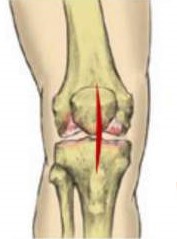Minimally Invasive Surgery
Minimally invasive surgery is a rapidly growing field that is revolutionizing the way we treat diseases and injuries. MIS techniques are less invasive, less time-consuming, and sometimes even less expensive than traditional surgeries. With all of the benefits that come with minimally invasive surgeries, it’s no wonder that this type of surgery is becoming increasingly popular.

What is Minimally Invasive Surgery?
Minimally invasive surgery is a kind of surgery that does the job with smaller tools and methods. This means that there will be less pain and less damage to the tissues around the surgical site. Such procedures are used to treat cancer, heart disease, and joint problems, among other things. There are different kinds of MIS procedures, and well-known doctors like Dr. Biren Nadkarni perform them.
Laparoscopic Surgery
Small cuts are usually made on the body for this kind of surgery. Then, using very small tools called laparoscopes, the surgeon works through these minor incisions. Most of the time, this type of surgery is used to remove the gallbladder, fix a hernia, fix a gastric ulcer, or diagnose or treat prostate cancer. Both adults and children can go ahead with laparoscopic surgery. Still, some procedures are not always safe for babies or young children.
Robotic Surgery
Robotic surgery is similar to laparoscopic surgery in that it uses small incisions on the body. However, robotic surgery also uses remote controls to operate the instruments directly on the patient’s skin or organs without having to enter the surgical area directly. Robotic surgery is primarily used for medical procedures such as coronary artery bypass, hip replacement, and hysterectomy.
What are the Benefits of MIS?
There are a number of benefits to undergoing such surgery, including:
- Less recovery time
- Reduced risk of infection
- Reduced risk of complications
- Easier access during future surgeries
Complications
There are a few things that could go wrong with minimally invasive surgery, like bleeding, infection, nerve damage, and scarring, among others. Most of the time, though, these problems are small and easy to treat. With the right surgeons, like Dr. Biren Nadkarni, you can keep problems from getting too bad. If you have any significant complications after surgery, you should talk to your doctor as soon as you can.
The Future
Minimally invasive surgery is ideal for patients who want to avoid extensive scarring and have faster recoveries. Today’s minimally invasive procedures use advanced technology and techniques that make them safer and more effective than ever before. For example, the miniaturization of surgical tools and equipment has allowed surgeons to reach deeper into the body with fewer complications. In addition, advances in imaging and navigation systems have made it possible for surgeons to target specific areas of the body precisely.
Minimally invasive surgeries provide many benefits for patients, including shorter hospital stays, reduced pain and swelling, and quicker recoveries. They are also becoming increasingly popular as a treatment option for conditions such as hip surgeries, cancer, herniated discs, gallbladder removal, and heart disease.
FAQs
What is minimally invasive surgery?
Minimally invasive surgery is a type of surgical procedure that uses small incisions and specialized tools to perform the surgery with less damage to surrounding tissues. This results in less pain, smaller scars, and a faster recovery time.
What are the types of minimally invasive surgery?
The types of minimally invasive surgery include laparoscopic surgery, robotic surgery, and endoscopic surgery. These techniques use small instruments and cameras to perform the surgery through small incisions or natural body openings.
What are the benefits of minimally invasive surgery?
The benefits of minimally invasive surgery include less pain, less blood loss, smaller scars, shorter hospital stays, faster recovery time, and a reduced risk of complications.
What are the risks of minimally invasive surgery?
The risks of minimally invasive surgery are similar to those of traditional surgery, including infection, bleeding, and damage to surrounding tissues. However, these risks are generally lower with minimally invasive surgery.
What conditions can be treated with minimally invasive surgery?
Minimally invasive surgery can be used to treat a wide range of conditions, including hernias, gallbladder disease, appendicitis, cancer, and joint problems.
Who is the best minimally invasive surgeon in Delhi?
There are many qualified and experienced minimally invasive surgeons in Delhi. To find the best surgeon for your needs, you may want to ask for recommendations from your primary care physician or other healthcare providers, read online reviews, and schedule consultations with several surgeons to discuss your options.
How much does minimally invasive surgery cost in Delhi?
The cost of minimally invasive surgery in Delhi can vary depending on several factors, including the type of surgery, the extent of the damage, and the surgeon's fees. In general, minimally invasive surgery can cost anywhere from Rs. 50,000 to Rs. 2,00,000 or more.
Will I need to stay in the hospital after minimally invasive surgery?
Most minimally invasive surgeries are outpatient procedures, meaning you will be able to go home the same day as the surgery. However, in some cases, a short hospital stay may be necessary, particularly if you have other health conditions or complications.
How can I prepare for minimally invasive surgery?
To prepare for minimally invasive surgery, you may need to stop taking certain medications, adjust your diet, and arrange for transportation to and from the hospital or surgical center. Your surgeon will provide you with specific instructions and guidelines to follow before the surgery.
How can I speed up my recovery after minimally invasive surgery?
To speed up your recovery after minimally invasive surgery, you may need to rest, follow a special diet, take pain medication as prescribed, and perform exercises recommended by your physical therapist to help regain strength and mobility. It's important to follow your surgeon's instructions carefully to ensure a smooth and successful recovery.
